Learn how to cook pasta al dente, as the Italian tradition wants. Follow this easy guide and all the best tips to cook pasta like a pro!
Follow my best tips to make the pasta al dente every single time, as the Italian tradition wants.
Pasta is a staple of Italian cuisine, and for all the good reasons. It’s inexpensive, quick to prepare, and easy to customize.
Cooking pasta is fairly easy, but how to cook it at the right point and make it have the right consistency?
This easy step-by-step guide will show you how to cook pasta without making mistakes and to enhance its texture, taste, and flavor.
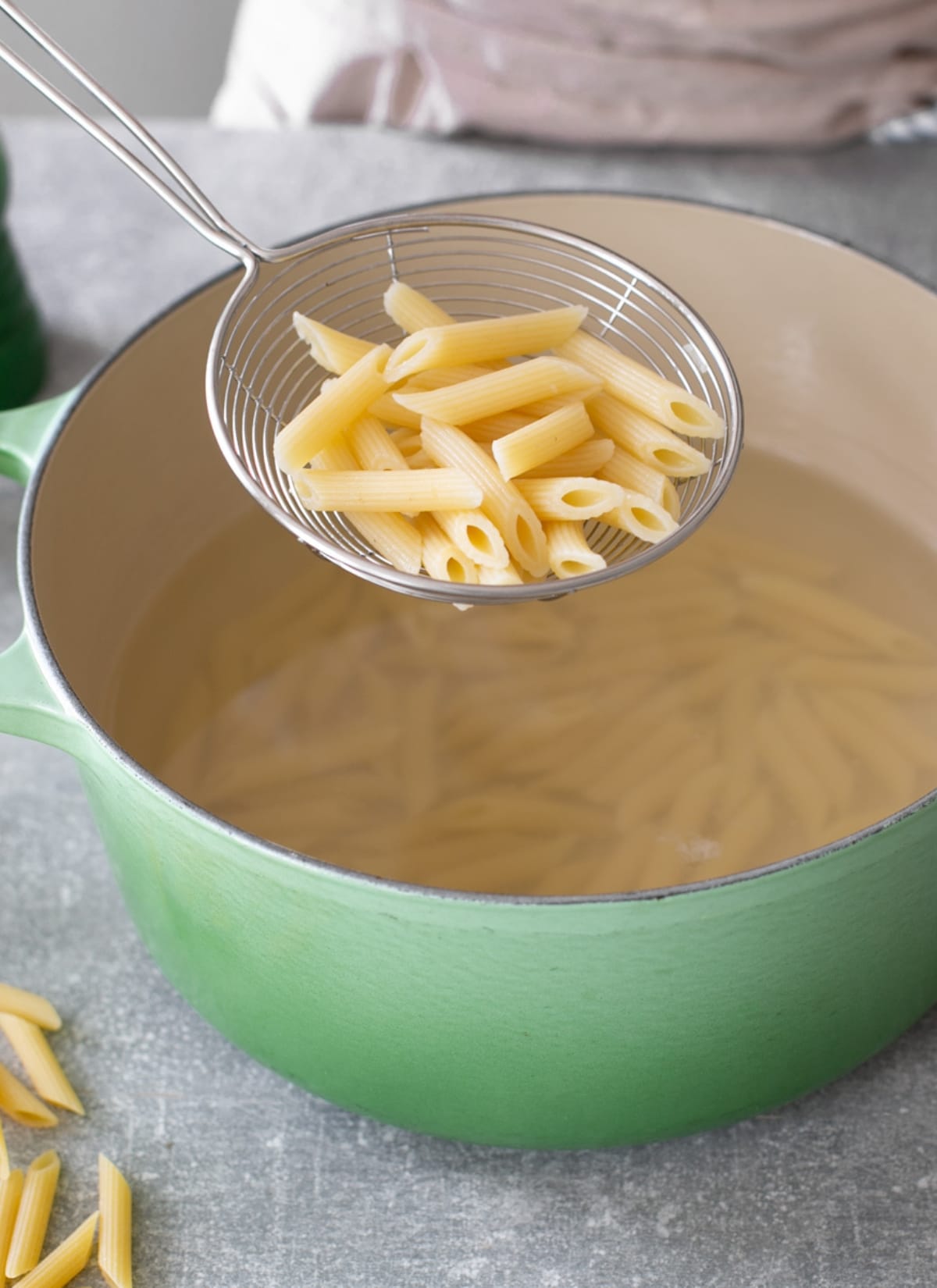
How to make al dente pasta
The common rule to cook perfectly al dente pasta is to drain the pasta 2-3 minutes before the suggested cooking time on the packaging.
However, different pasta quality gives different results, even after following this rule.
Most commercial pasta gets chewier easily, high-quality bronze-cut pasta (such as pasta from Gragnano) holds the cooking time better and will give you a better chance to achieve al dente pasta even if the pasta cooks a little longer than necessary.
My best tip is to avoid following the cooking time too religiously.
Taste the pasta every 2-3 minutes, when it’s almost ready, you will be able to see a little white dot at the center of the spaghetti or a white ring if you are cooking a tube-shaped pasta.
At this point, let the pasta cook for another minute, then drain.
Don’t forget that pasta will continue to cook after you drain it and return it to the pot.
How to cook pasta step-by-step
For 4 people you need about 300 g of pasta (75 g per person), 3 liters of water, and a generous tablespoon of sea salt.
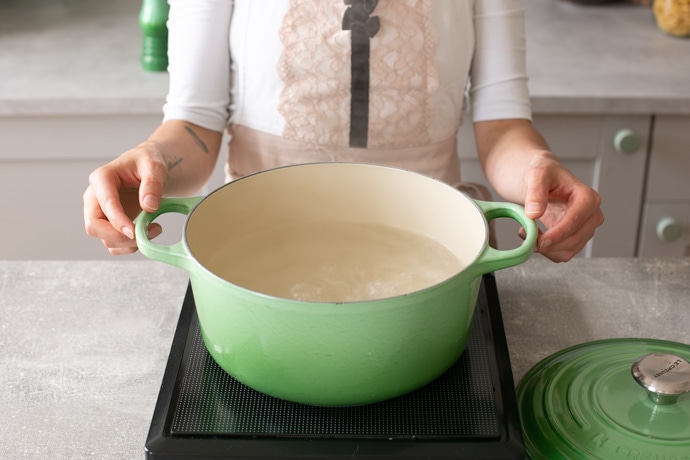
STEP 1. Fill ⅔ of a large saucepan with water, put the lid on, and bring to a boil over high heat.
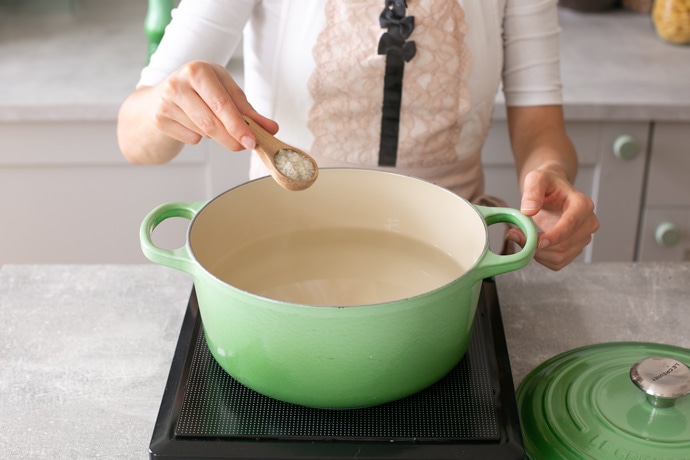
STEP 2. Remove the lid and add the sea salt.
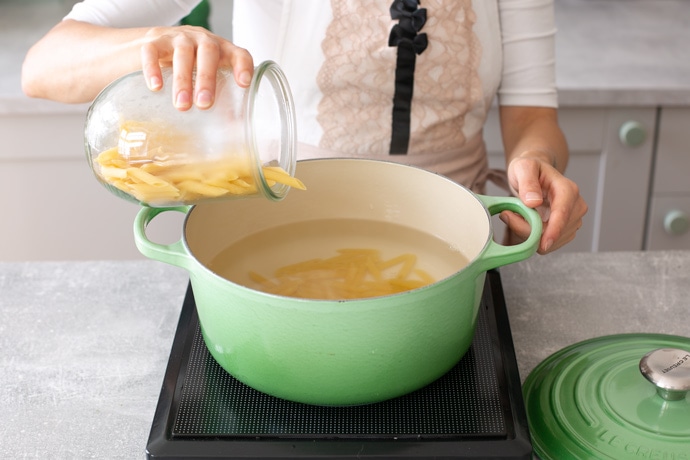
STEP 3. Stir in the pasta, then reduce the heat to medium heat.
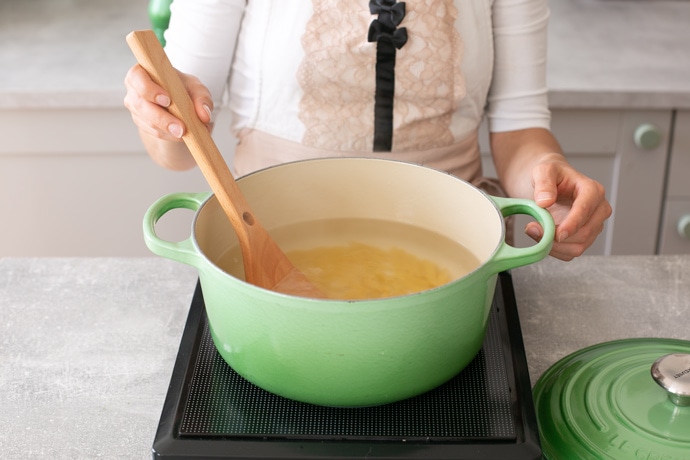
STEP 4. Stir the pasta with a wooden spoon every 3 minutes.
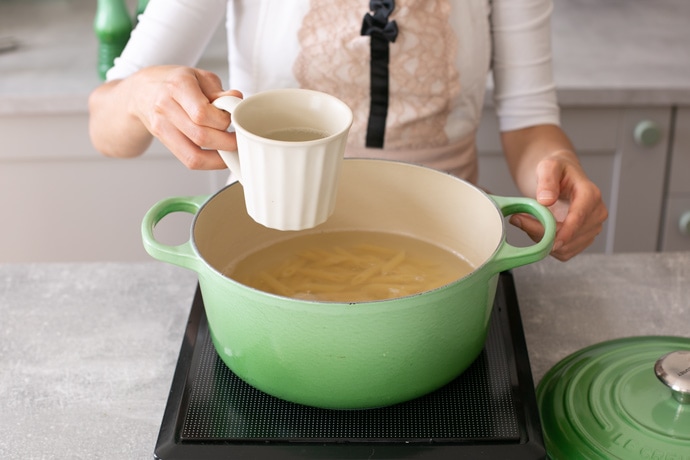
STEP 5. Remove about 1 cup of pasta cooking water to emulsify the pasta sauce later.
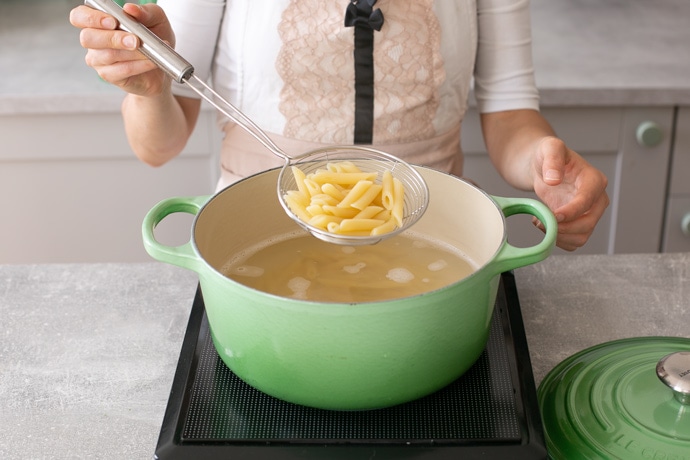
STEP 6. When the pasta is tender but still has a bite, drain the pasta in a colander over the sink or use a strainer to scoop the pasta from the water.
Return the pasta to the pot or transfer it into the pan with your favorite sauce, and mix by adding a little of the reserved pasta water until you reach the desired consistency.
Pasta cooking tips
- After you drain the pasta don’t “wash” it under cool running water, this will only make it sticky and chewy.
- Choose the right pan. A large pot is best for short pasta (penne, rigatoni, ditali, fusilli, bows, etc.). A tall pot is best for spaghetti and bucatini.
- Don’t overfill the pot with water, fill just ⅔ of the pot with water, so that there’s enough room for the pasta.
- Add all the pasta in one go, so that it will cook evenly.
- Stir the pasta every 2-3 minutes to avoid that it sticks together, this is particularly important for long pasta such as spaghetti.
- Follow the cooking time suggested on the pasta packaging, but not religiously. For al dente pasta you’ll need to drain it about 2-3 min before the time suggested on the packaging.
- Always reserve ¼ cup of pasta water before you drain it. You should never drain all the pasta water, this starchy liquid will make silky, smooth, and delicious pasta sauces.
Recipe FAQs
Do you add oil to the pasta water?
Some people suggest adding olive oil to the pasta water, as it prevents the pasta from sticking together. However, you don’t need to add oil to the pasta water, simply mix the pasta every 2-3 minutes and it won’t stick.
Should you cook the pasta with the lid on or off?
Put a lid on the pot while you are waiting for the water to boil. However, when you add the pasta, you should take the lid off to prevent the water from bubbling over.
Do I keep the water boiling when cooking pasta?
Absolutely not. The water should be bubbling vigorously when the pasta is added, keep the heat high to return to full boil as rapidly as possible, then adjust the heat as necessary to prevent a boil-over.
Do you cook the pasta on high heat?
No, you shouldn't cook it over high heat. Cook the pasta over medium heat to avoid the water from bubbling over.
Can you cook the pasta in the sauce?
Technically yes, but it depends. I like to cook pasta in soup-kind of sauces such as pasta e ceci (pasta with chickpeas), where there’s plenty of liquid for the pasta to absorb.
To cook the pasta in tomato sauce, you need to thin the sauce with plenty of water, and the sauce will probably lose a lot of its flavor.
So I don’t typically recommend it, but if you do, try to swap the water with veggie or chicken broth for extra flavor (some Italian chefs use this technique to make pasta risottata)
Favorite pasta sauce recipes
Once your pasta is perfectly cooked, try one of these delicious sauces:
- Keep it simple with a pomodoro sauce.
- Toss it through vegan broccoli pesto sauce.
- Make the perfect burrata pasta for your lunchbox.
- Try the classic authentic bolognese sauce.
Or check out these delicious pasta recipes:
Cheesy and Creamy Tuna Pasta Bake
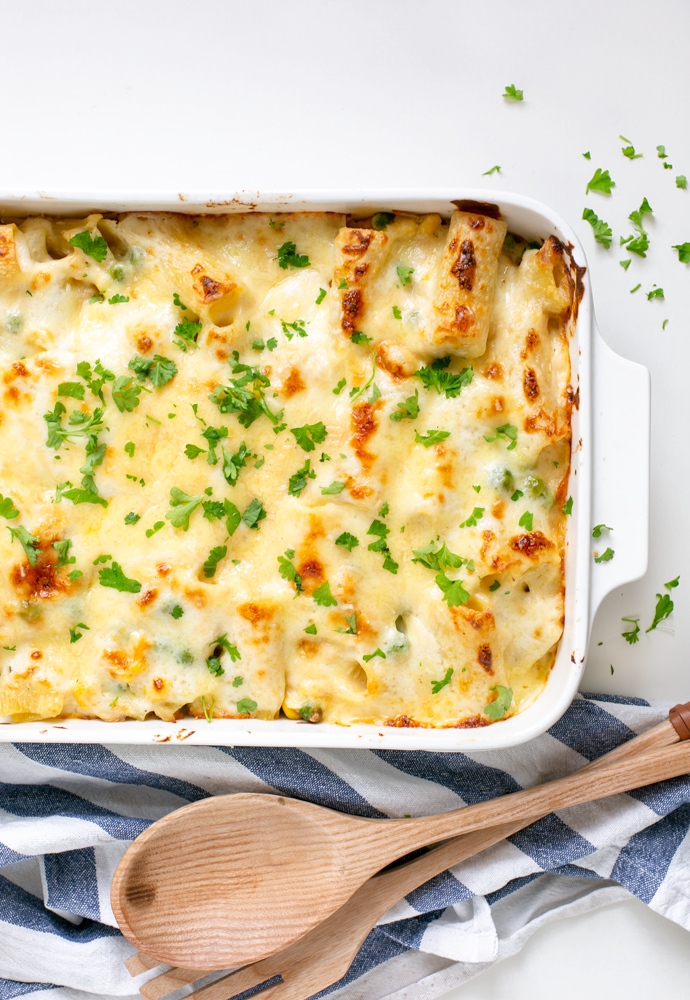
Pasta with Sweet Potato and Prosciutto
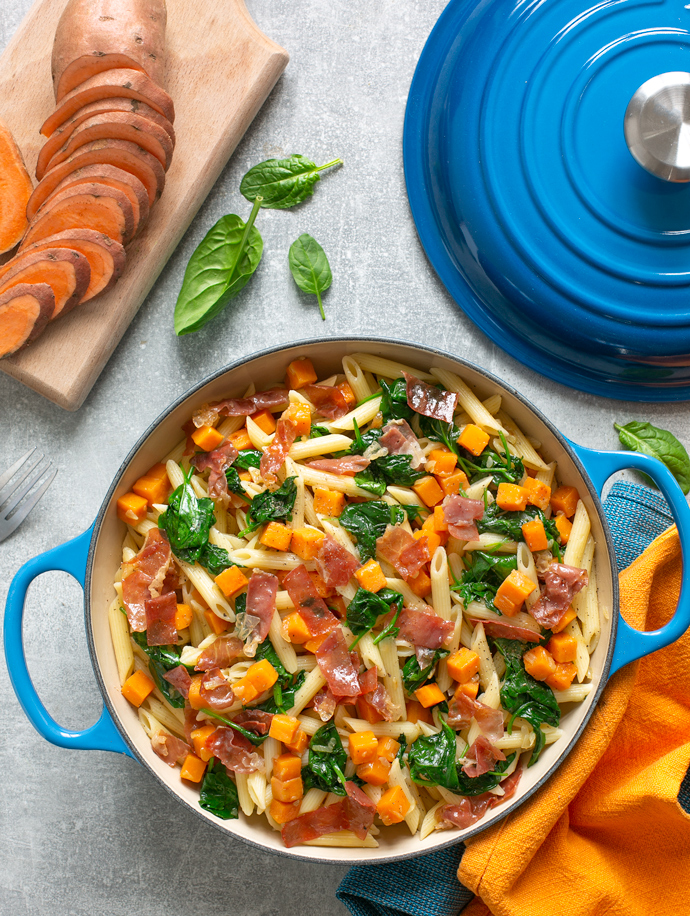
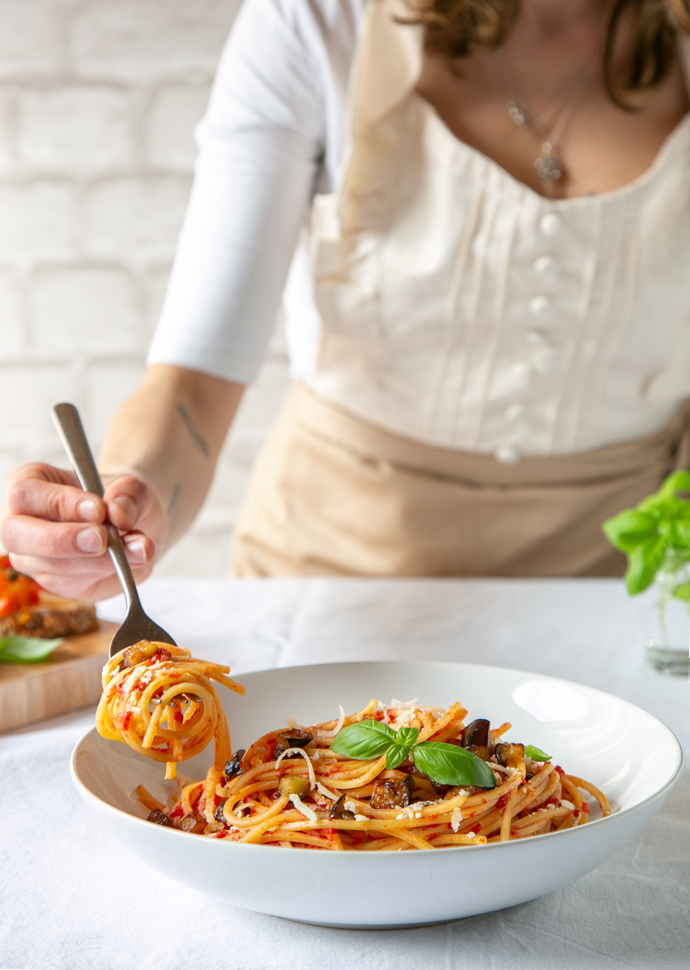
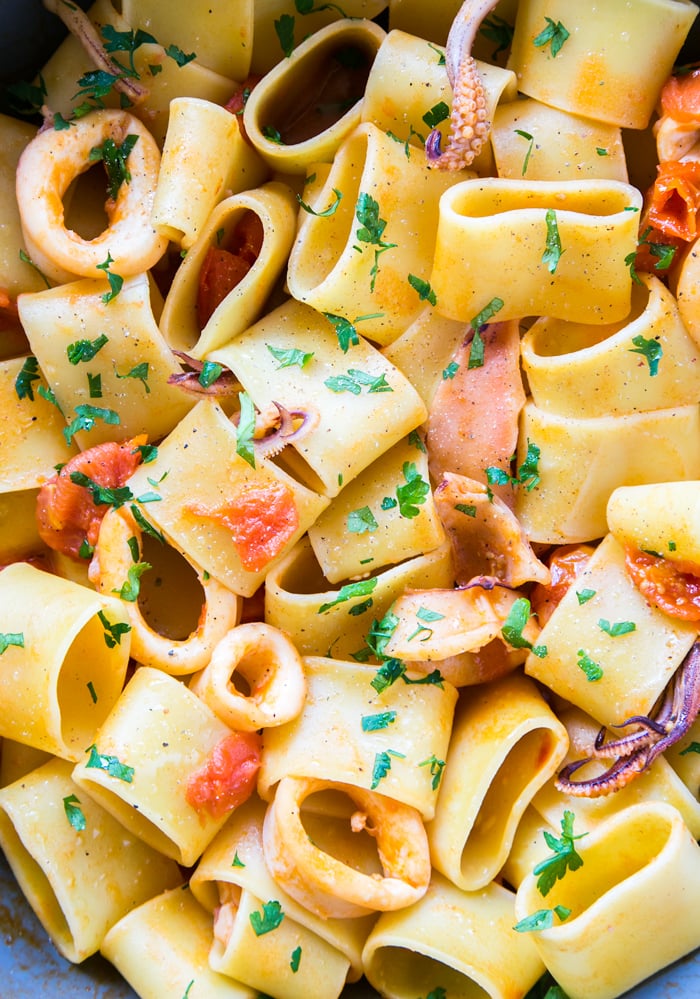
Did you try this recipe?
Please let me know how you liked it! Leave a comment below and share a picture on Instagram with the hashtag #thepetitecook!
Don't forget to subscribe to my newsletter and follow along on Facebook, Pinterest and Instagram for all of the latest updates.
Recipe
How To Cook Pasta Al Dente
Ingredients
- 300 g pasta
Instructions
- Fill ⅔ of a large saucepan with water, put the lid on, and bring to a boil over high heat.
- Remove the lid and add the sea salt.
- Stir in the pasta, then reduce the heat to medium heat.
- Stir the pasta with a wooden spoon every 3 minutes.
- Remove about 1 cup of pasta cooking water to emulsify the pasta sauce later.
- Start testing the pasta about 4 minutes before the cooking time suggested on the package instructions. When it’s tender but still has a bite, drain the pasta in a colander over the sink or use a hand colander to scoop the pasta from the water.
- Return the pasta into the pot or transfer it into the pan with your favorite sauce, and mix by adding a little of the reserved pasta water until you reach the desired consistency.
Video
Notes
- After you drain the pasta don’t “wash” it under cool running water, this will only make it sticky and chewy.
- Choose the right pan. A large pot is best for short pasta, a tall pot is best for spaghetti and bucatini.
- Don’t overfill the pot with water, fill just ⅔ of the pot with water.
- Add all the pasta in one go, so that it will cook evenly.
- Stir the pasta every 2-3 minutes to avoid that it sticks together, this is particularly important for long pasta such as spaghetti.
- Follow the cooking time suggested on the pasta packaging, but not religiously.
- For al dente pasta you’ll need to drain it about 2-3 min before the time suggested on the packaging.
- Always reserve ¼ cup of pasta water before you drain it. You should never drain all the pasta water, this starchy liquid will make silky, smooth and delicious pasta sauces.
Nutrition
The information shown is an estimate provided by an online nutrition calculator. It should not be considered a substitute for a professional nutritionist’s advice.


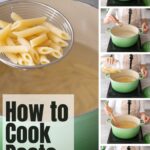
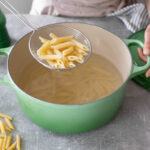
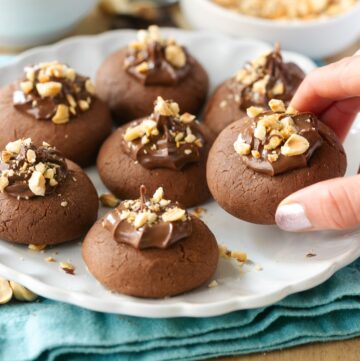
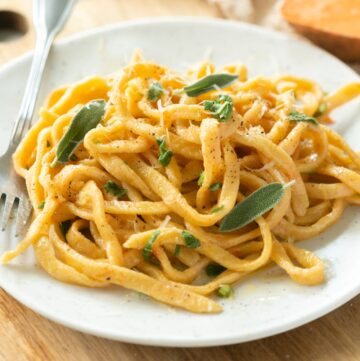
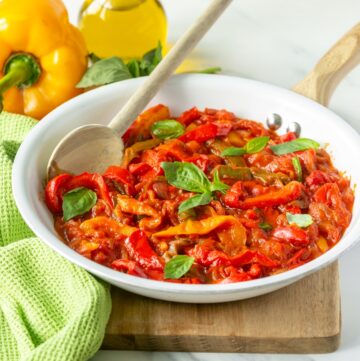
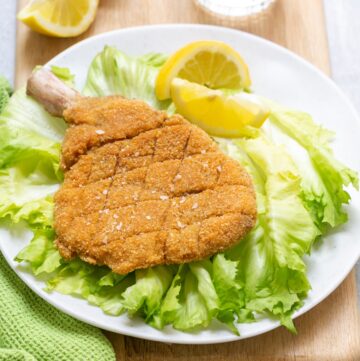
JR says
This was incredible. I usually have pulled pork in my freezer as I smoke several pork butts at once and this was a great way to change things up and use up the pork. Everything about the mac & cheese was delicious. Even if I didn’t put any pulled pork in it, this recipe is better than the way I had previously made mac & cheese, and I won’t go back. Thanks so much.